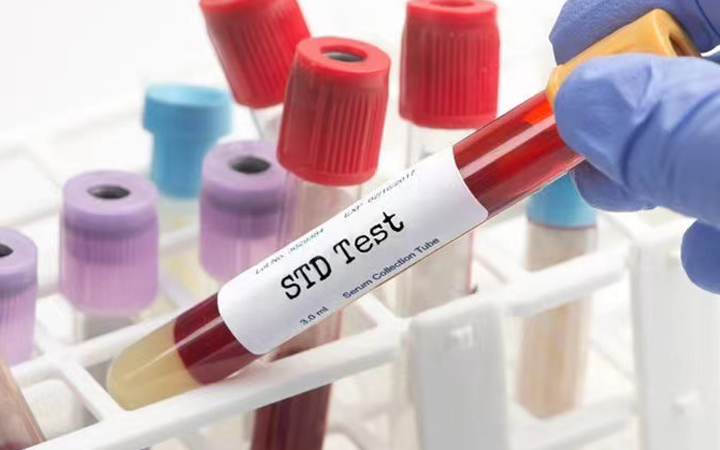Emerging Clinical Significance of HBV RNA: A New Hepatitis B Viral Marker
Hepatitis B virus (HBV) poses an enduring global health dilemma, with current therapeutic strategies falling short of total viral eradication, even with the advent of nucleos(t)ide analogues (NAs) and pegylated interferon (Peg-IFN) (Deng et al., 2022). The enigmatic persistence of HBV is predominantly attributed to the tenacious presence of covalently closed circular DNA (cccDNA) within hepatocytes, which acts as a resilient template for viral replication and transcription.
Traditionally, assessing intrahepatic HBV activity hinged on the use of liver biopsies, an invasive approach that is fraught with risks and not amenable to routine monitoring (Mak et al., 2021). This has precipitated an urgent quest for non-invasive, efficacious surrogate markers capable of monitoring intrahepatic HBV activity, a pursuit that has garnered significant momentum in recent years. While conventional serological markers such as serum HBV DNA, hepatitis B e antigen (HBeAg), and hepatitis B surface antigen (HBsAg) have been used to reflect viral replication activity during the natural course of infection, they may not accurately represent cccDNA transcriptional activity in patients receiving NA treatment (Li et al. 2021).
In the quest for non-invasive alternatives, circulating HBV RNA has emerged as a beacon of hope, heralding a new era in the surrogate markers for intrahepatic cccDNA (Deng et al., 2022). This biomarker has captured the scientific community’s attention for its potential in monitoring the progression of chronic hepatitis B (CHB) in patients, irrespective of their antiviral treatment status (Deng et al. 2022). Importantly, HBV RNA allows for the monitoring of viral activity even in patients where serum HBV DNA is undetectable, providing a more sensitive measure of ongoing viral replication.
Circulating HBV RNA primarily consists of full-length, spliced, and 3′-truncated pregenomic RNA (pgRNA). In the blood of CHB patients, it circulates mainly in the form of virus-like particles, including enveloped viral particles and naked capsids (often as capsid-antibody complexes in patient serum) (Deng et al. 2022). The exact mechanism by which these RNA-containing particles are released from hepatocytes remains elusive, highlighting the complex biology of HBV RNA.
The relationship between circulating HBV RNA and intrahepatic viral activity is of particular interest. Theoretically, circulating HBV RNA correlates well with intrahepatic HBV RNA, reflecting both the quantity and transcriptional activity of nuclear cccDNA, independent of NA treatment (Mak et al. 2021). This characteristic makes HBV RNA a potentially valuable biomarker for assessing the efficacy of antiviral therapies and predicting treatment outcomes.
It’s important to note that the reverse transcription of HBV pgRNA occurs intracellularly. To accurately reflect reverse transcription efficiency, the ratio of intrahepatic HBV pgRNA to intrahepatic relaxed circular DNA (rcDNA) would be ideal. However, quantifying intracellular HBV pgRNA and distinguishing it from other HBV RNA species within hepatocytes remains challenging (Li et al. 2021). These other species include precore region RNA, internally spliced RNA, and 3′-end truncated pgRNA.
Moreover, cytoplasmic full-length pgRNA has three main fates: (1) translation into viral proteins, (2) direct secretion after encapsidation, and (3) reverse transcription into rcDNA (Li et al. 2021). This complexity underscores the potential of serum HBV RNA as a biomarker of viral activity, while also highlighting the need for further research to determine whether the serum HBV RNA/DNA ratio can accurately reflect intracellular pgRNA reverse transcription efficiency.
Another biomarker that has shown promise in reflecting cccDNA levels and transcriptional activity is the hepatitis B core-related antigen (HBcrAg). HBcrAg comprises three related proteins sharing a 149 amino acid sequence: HBeAg, hepatitis B core antigen, and a truncated 22 kDa precore protein (Mak et al. 2021). Studies in Chinese populations have shown that serum levels of HBV RNA and HBcrAg change dynamically during the natural course of CHB infection, with good correlation between these two biomarkers in patients.
Interestingly, the persistent detectability of serum HBV RNA and HBcrAg in patients who have achieved HBsAg seroclearance suggests that these individuals still require monitoring of viral biomarkers and liver-related complications (Mak et al. 2021). This finding underscores the potential of HBV RNA as a more sensitive marker of residual viral activity compared to traditional serological markers.
A study published in 2022 titled “Clinical Research on Serum HBV RNA Quantitative Detection in Antiviral Therapy of Chronic Hepatitis B Patients” utilized an HBV RNA quantitative detection kit (Sansure Biotech) to evaluate the efficacy of antiviral therapy in CHB patients (Sun et al. 2022). The results indicated that serum HBV RNA levels more accurately reflected and monitored the efficacy of NA antiviral therapy in CHB patients, suggesting its potential use in assessing the safety of discontinuing antiviral treatment.
However, it’s crucial to acknowledge that due to the complex biological nature of circulating HBV RNA, quantitative analyses using different technologies and amplification targets may detect HBV RNA species with varying sensitivities, potentially leading to inconsistent clinical results (Deng et al. 2022). This variability highlights the need for standardization of HBV RNA detection methods to ensure consistent and comparable results across different clinical settings and research studies.
In summation, HBV RNA stands out as a groundbreaking biomarker with the potential to revolutionize the monitoring of HBV infection and treatment efficacy. Its capacity to mirror intrahepatic cccDNA levels and transcriptional activity, even in scenarios where serum HBV DNA remains undetectable, positions it as an invaluable asset in the clinical management of CHB. The forthcoming research must focus on standardizing HBV RNA detection methods and unraveling the biological nuances of its various species to harness its full clinical potential. The integration of HBV RNA testing into clinical practice could significantly improve the monitoring and management of CHB patients, potentially leading to more personalized treatment strategies and better long-term outcomes.
Works Cited
Deng R, Liu S, Shen S, Guo H, Sun J. “Circulating HBV RNA: From Biology to Clinical Applications.” Hepatology, vol. 76, no. 5, 2022, pp. 1520-1530.
Li W, Deng R, Liu S, Guo H, Sun J. “Letter to the Editor: Can the Ratio of Serum HBV RNA to DNA Reflect the Reverse-Transcription Efficiency of Viral pgRNA?” Hepatology, vol. 74, no. 1, 2021, pp. 532-533.
Mak, LY, Cloherty G, Wong DK, Gersch J, Seto WK, Fung J, Yuen MF. “HBV RNA Profiles in Patients With Chronic Hepatitis B Under Different Disease Phases and Antiviral Therapy.” Hepatology, vol. 73, no. 6, 2021, pp. 2167-2179.
Sun, Huabao, Meiqi Li, Qinan Lai, et al. “Clinical Research on Serum HBV RNA Quantitative Detection in Antiviral Therapy of Chronic Hepatitis B Patients.” Experimental and Laboratory Medicine, vol. 40, no. 3, 2022, pp. 306-309.





